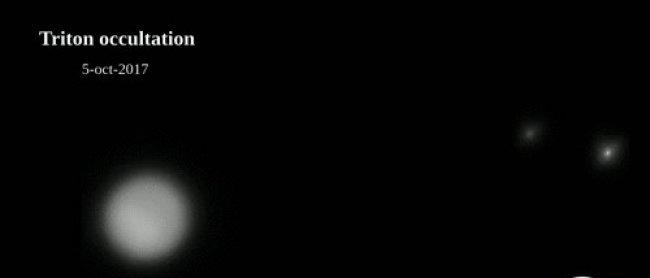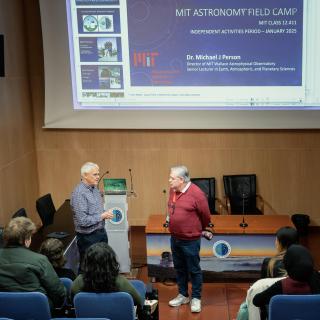On the night of 5th of October a star in the sky “was switched off”. Triton, the largest of the moons of Neptune, at some 4,500 million kilometres from the Earth passed in front of the star UCAC4 410-143659, briefly occulting it. It is not at all frequent that during their “cosmic passage” around the Sun, the planets and their satellites cross the line of sight to a distant star, but the telescopes of the Canary Island Observatories, among others, were able to point to the sky just when this occultation, which lasted 145 seconds, was taking place.
Its occultation was observed with diverse telescopes distributed all over the globe, including the SOFIA telescope, installed on board a NASA 747 aircraft. From the Teide Observatory (Izaña, Tenerife), the Carlos Sánchez telescope was used, and from the Roque de Los Muchachos Observatory (Garafía, La Palma), the Nordic Optical Telescope (NOT), the Jacobus Kapteyn Telescope (JKT) Telescopio Nazionale Gallileo (TNG), the Isaac Newton Telescope, from the ING Group of Telescopes, and the Gran Telescopio CANARIAS (GTC). The data collected will be useful to study the atmosphere of Triton by the light that crossed it as it passed in front of the star.
The IAC team of lucky imaging and adaptive optics observed with the FastCam instrument installed in the NOT, unique for its very high spatial resolution - details in objects very little separated in an image - and temporary - fastness with which it takes them - in the visible range. Using the 87,000 images of only 60 ms, a video of the occultation was realized in which it is observed on the left Neptune and on the right the star as the brightest point and Tritón like the weaker one.



